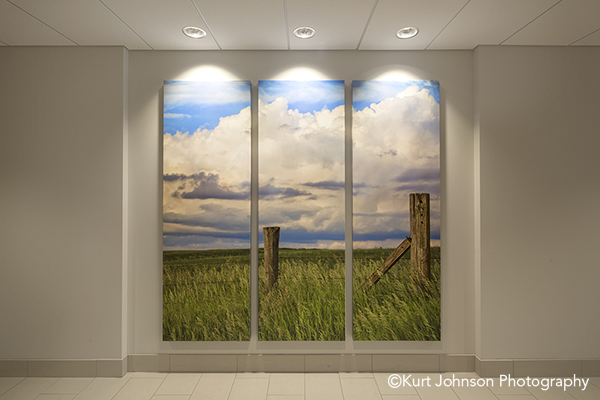Creating Healthcare Spaces with Intention


Even though I’ve been a Midwestern fine art photographer for many years, when I began creating art for healthcare, I was excited about being part of a movement that could benefit patients, families, doctors and staff in tangible ways.
The idea of creating spaces with intention, from the very beginning of the design process, has been an important discovery in health care design, and, yet, the basis of this idea is simple and has research to back it up.
In the article, Art in Healthcare by Michael Lehman from Health Care Design Magazine, Lehman explains the importance of art in hospitals: “Art is arguably the first thing people react to when they approach or enter a facility. When the process for selecting and integrating art with healthcare design fully considers context, art adds value well beyond a visually aesthetic appeal.”
Lehman cleverly explains the importance of integrating artwork into a building’s initial design, comparing it to embellishing an expensive suit with cheap accessories,
“The potential impact of the accessories is lost, and the quality of the fine suit is diminished.”
When fine art photography is considered at the inception of a new hospital being built, it becomes “an intrinsic part of the design . . . which research has shown can have a direct, positive effect on patient outcomes.”
In the same way we enter into any experience in our lives with intention and knowledge, I believe we can always hope for a more positive and dedicated outcome. The experiences patients and staff have in hospitals, the experiences that are informed by the design and esthetic of the space, create ripple effects in, not only their own lives, but also the lives of those around them. Lehman lists the many benefits of this type of evidence-based design, including decreases in the areas of:
- Patient and employee anxiety and stress;
- Pain perception as measured by physiological outcomes, such as blood pressure, heart rate, and skin conductivity response, in addition to self-report measures like pain-rating scales and surveys;
- The need for analgesic medication;
- Depression associated with chemotherapy, dialysis, and other invasive treatments;
- Non-operative treatment times;
- Operative recovery times;
- Mental healthcare treatment times;
- Abusive behaviors by mental healthcare patients;
- Length of hospital stay; and
- Employee turnover, missed days;
Lehman concludes by explaining how “Art, when appropriately selected and placed, has durability. It engages the viewers, transports them, delights and amuses them, calms and reassures them, day after day.” This research motivates me and reinforces my belief in its importance. Because, in the end, I can think of no more nobler cause, than bringing comfort to someone going through a difficult time.

Categories: Healing, Healthcare, Installations, Photography, Research


